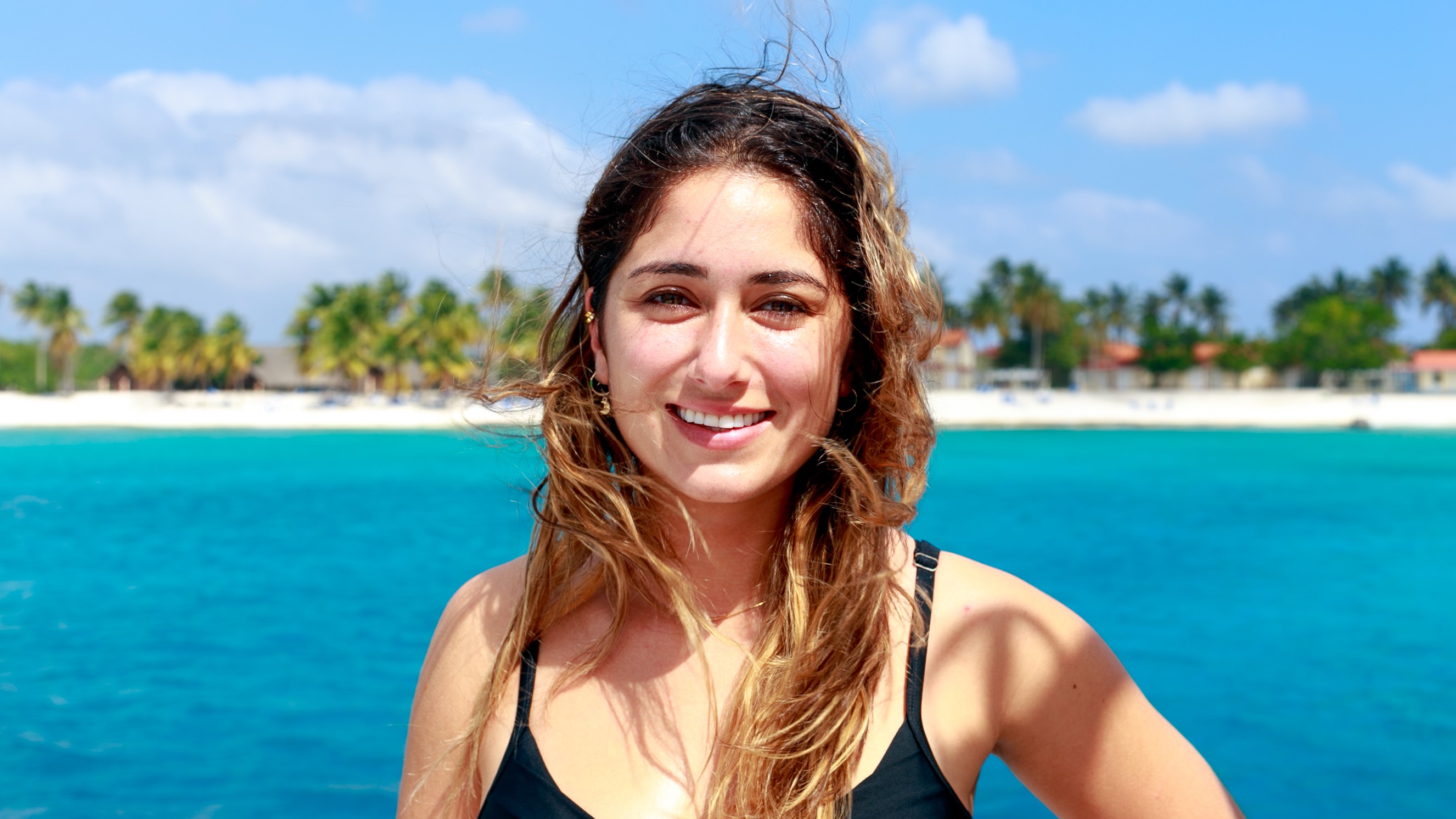When Shireen Rahimi went to Havana in 2015 for MarCuba, an international marine science conference, she had not yet chosen Cuba’s coral reefs as a dissertation research topic. After attending the conference, Rahimi became interested in studying the effects of Cuba's growing tourism industry on the health of its marine ecosystem.
As a doctoral student at UM’s Abess Center for Ecosystem Science and Policy, Rahimi has taken an interdisciplinary approach to her graduate studies - she drew on her expertise in the biological sciences from her undergraduate studies at Columbia University as well as her experience as a skilled photographer. Her current doctoral project studies the coral reef ecosystem of the Guanahacabibes National Park in Western Cuba and uses visual media to communicate the effects of human activities on this biodiverse region. In 2017, she won the National Geographic Young Explorer’s Award, a prestigious grant that supports her cutting-edge work combining visual storytelling with marine life research.
Rahimi was introduced to her research site in Western Cuba by Fernando Bretos, her project mentor. Bretos is the director of CubaMar, a scientific research organization dedicated to collaboratively advancing and informing conservation policy efforts in Cuba and the greater region. Rahimi and Bretos were attracted to the research potential of the site because its coral reefs show high levels of biodiversity and ecosystem health relative to the region.
Rahimi points out that the rapid growth of tourism in Cuba in the last decade has threatened to diminish the country's coral reef ecology. She says, "Cuba is at a critical stage in its economic development. Tourism is both a potential boost to its ailing economy and a looming threat to its natural ecosystems." Rahimi works with officials at Guanahacabibes National Park to create preventative measures that will protect the coral reefs from human impacts. Rahimi also uses visual story-telling methods that will raise the public's awareness of the importance of these management measures.
Rahimi's commitment to visual media is driven by its power to engage the
As part of her research, Rahimi is collecting underwater photography and footage in the coral reefs of Guanahacabibes National Park -- and also in the Florida Keys, where coral reefs have been degraded by years of unsustainable tourism. By juxtaposing visual media from these two places, Rahimi is creating an immersive experience for the audience, so that they can experience changes in the marine environment as a sensory reality.
UM's Abess Center provides Rahimi with the perfect academic setting for undertaking interdisciplinary research. She works closely with Dr. Kenny Broad, who is an explorer recognized by National Geographic, and a leading interdisciplinary researcher with media production experience. Abess faculty members Dr. Meryl Shriver-Rice and Dr. Keene Haywood also work with environmental media and production techniques. Rahimi says, "I feel very lucky to have a group of faculty that are uniquely suited to help me on this project."
Rahimi recognizes the challenges and the rewards that are specific to interdisciplinary studies at the highest level. She says, "Interdisciplinary work is difficult because you have to be able to defend your knowledge and proficiency in multiple fields of study.” Rahimi continues, "I worked independently to study many aspects of anthropology, protected area management, and film production."
Entering the program with a background in ecosystem science and photography, Rahimi dedicated herself to independent learning across several other disciplines. This, she notes, helped focus her research on urgent environmental issues: "An interdisciplinary approach produces knowledge that is more applicable to the real
Rahimi's National Geographic award not only funds part of her
For more on Rahimi's work, visit shireenrahimi.com.

